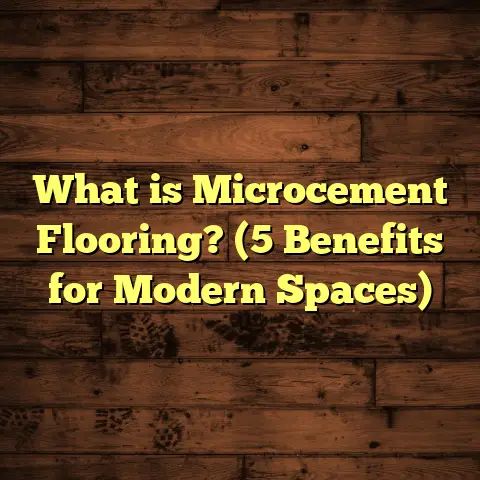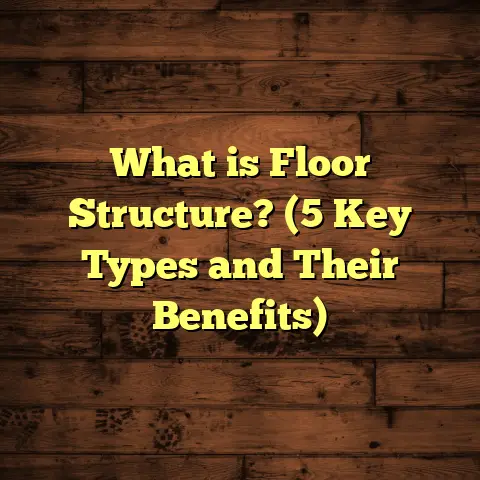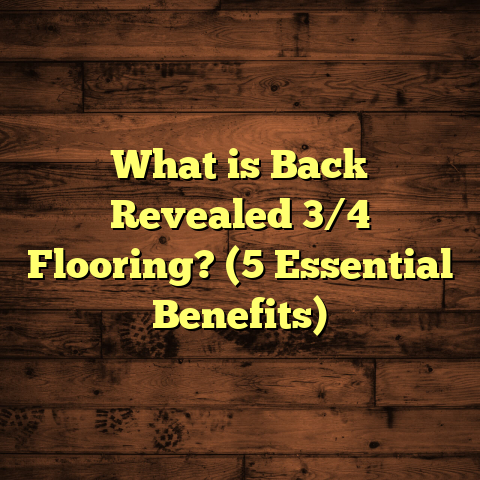What Is on Your Wood Floor? (5 Signs to Spot Damage)
Have you ever stopped and really looked at your wood floor?
Not just admired it, but examined it closely—wondering if what you see is truly healthy
or if hidden damage is creeping beneath the surface? I ask because I’ve spent countless
hours working with wood floors, peeling back their layers to find stories of wear, neglect, or even unseen issues
that could cost more down the line. Wood floors don’t just hold the weight of your furniture;
they hold the history of your home. So, what’s really on your wood floor?
What Is Wood Floor Damage?
Let’s start with the basics. What is wood floor damage? At its core, it’s any change to the wood’s surface or structure
that affects its appearance, function, or lifespan. Damage can range from superficial scratches to deep structural problems.
Wood is a natural material that reacts to its environment—humidity, temperature, foot traffic, pets, spills—all leave their mark.
Damage can be visible, like cracks or stains, or hidden beneath finishes. Sometimes it’s slow and subtle; other times it hits hard and fast.
The tricky part? Early signs often go unnoticed until they become serious. That’s why knowing what to look for can save you a lot of headache.
I remember one job where the homeowner was convinced their floor was fine—until I spotted tiny raised edges along a plank.
It turned out moisture had seeped in weeks before causing swelling and warping under the finish. Catching that early
meant we prevented a full plank replacement that would have cost thousands.
Why Wood Floors Are Vulnerable
Wood is hygroscopic—it absorbs and releases moisture depending on its environment. This means the floor
is always reacting to changes inside your home. Humidity levels above 60% or below 30% cause wood to expand or contract.
Over time, these cycles cause stress in the wood fibers and finish. Even minor changes in moisture can cause gaps to open or close between planks.
Take this into account along with daily wear and tear—people walking on it, pets scratching nails, furniture shifting—and it’s no surprise floors show damage.
The Importance of Early Detection
I’ve seen cases where what looked like a simple scratch turned into a deep gouge affecting the plank beneath.
Ignoring early damage invites larger problems—water infiltration, rot, mold, or structural instability.
Early detection lets you plan repairs more affordably and extend your floor’s life by years, sometimes decades.
5 Signs to Spot Damage on Your Wood Floor
I want to help you become an expert in spotting issues as soon as they appear. Let’s break down five common signs of wood floor damage.
1. Scratches and Surface Wear
Scratches are the most obvious type of damage but often underestimated.
I’m sure you’ve seen those light surface scratches from dragging chairs or pets’ nails. At first glance, they might seem harmless—and sometimes they are.
But here’s what I’ve learned: when scratches penetrate through the finish and reach bare wood, they expose it to dirt and moisture.
Over time, these areas become weak spots prone to further damage. I once worked on a home where a dog had scratched an area repeatedly over two years. The damage became so severe the floor needed partial sanding and refinishing—not just a quick touch-up.
How Scratches Form
- Foot traffic: Shoes with grit or small stones can scratch finishes.
- Furniture movement: Sliding furniture without pads.
- Pets: Nails scratching during play or running.
- Improper cleaning: Using abrasive tools or harsh chemicals.
How to Detect Scratches Early
Run your hand over suspected areas—if you feel roughness or dips, it indicates finish wear or deeper scratches.
Use a flashlight at an angle to highlight scratches—the light reflects differently on uneven spots.
Preventing Scratches
- Use furniture pads under legs.
- Trim pet nails regularly.
- Clean floors gently with wood-safe products.
- Place rugs in high-traffic zones.
Fixing Scratches
Minor scratches can be treated with wood touch-up markers or wax sticks matched to your floor color.
Deeper scratches often require sanding and refinishing specific areas.
A 2022 survey by the National Wood Flooring Association (NWFA) found that homes with pets reported 35% more surface scratches within the first year of installation compared to pet-free homes.
2. Discoloration and Stains
Discoloration isn’t just about aesthetics—it can signal underlying damage.
I’ve seen floors where discoloration masked water damage underneath, leading homeowners to miss serious issues until boards warped or softened.
Causes of Discoloration
- Water spills: Liquids left too long soak into wood fibers.
- Sunlight: UV rays fade or yellow wood over time.
- Chemical spills: Cleaners, oils, or other substances.
- Mold/mildew: Hidden moisture causes dark patches.
Types of Stains
- White rings: Usually from water trapped under finish.
- Dark spots: Water that penetrates deeper or chemical reactions.
- Yellowing: UV exposure oxidizes surface layers.
My Personal Story With Discoloration
Once, a client called me worried about dark spots in their kitchen floor near the sink. They thought it was just dirt.
Upon inspection, I found slow leaks from plumbing had stained and slightly softened several planks beneath the surface—early signs of rotting.
If untreated, this could have led to full plank replacement costing over $3,000.
How To Fix Discoloration
- For light stains: Buffing and refinishing.
- For deep stains: Replacing affected planks.
- UV protection: Applying finishes with UV inhibitors slows fading.
Statistics on Discoloration Risks
Studies show that water spills left unaddressed for more than 24 hours increase discoloration risk by 70%. That short window matters!
3. Warping and Buckling
Warping is one of the more serious types of damage you want to catch early.
It happens when moisture causes wood planks to swell unevenly. The floor can lift or buckle, creating trip hazards and damaging surrounding boards.
Why Warping Happens
- Water leaks from pipes or appliances.
- Excess indoor humidity.
- Poor subfloor ventilation trapping moisture.
- Flooding incidents.
I’ve seen kitchens where unnoticed leaks caused entire sections of flooring to bubble up like waves on water—definitely not something you want underfoot!
How To Spot Warping Early
Look for:
- Raised edges along planks.
- Gaps forming between boards.
- Uneven surfaces where boards don’t lie flat.
Tap affected areas; a hollow sound may indicate separation from subfloor.
My Experience With Warped Floors
One job involved repairing a sunroom floor exposed to rainwater during a broken window incident. The owner delayed calling me for weeks.
By then, warping was so bad that 40% of the planks had to be replaced—not just refinished.
Repair Options
- Minor warping: Professional sanding and moisture control.
- Severe warping: Removing damaged planks and correcting subfloor issues.
According to flooring professionals, moisture-related warping accounts for almost 30% of all wood floor repairs annually in humid climates.
4. Cracks and Splits
Cracks might look like small flaws but can reveal stress in the wood structure.
Common Causes
- Low indoor humidity (dry winter air).
- Sudden temperature drops.
- Poor acclimation before installation.
- Natural aging of wood fibers.
Cracks I’ve Seen in My Work
In one cold climate home, heating was set very high during winter without humidifiers. Cracks appeared along plank edges within months after installation.
This necessitated costly filling work and eventually full-area sanding and refinishing to restore the look.
How Cracking Affects Floors
Cracks allow dirt and moisture inside, accelerating decay.
They also weaken planks making them prone to breaking under pressure.
A recent study by the Hardwood Flooring Institute showed cracked floors had a 20% shorter lifespan compared to well-maintained counterparts in similar environments.
How To Prevent Cracking
- Maintain indoor humidity between 35%–55%.
- Use humidifiers in dry seasons.
- Proper acclimation: letting wood adjust to indoor conditions before installation.
- Avoid rapid temperature swings indoors.
5. Squeaks and Loose Boards
Squeaky floors aren’t just annoying; they can signal structural problems undermining your floor’s stability.
Loose boards move slightly with pressure causing friction noises—often due to shrinking wood or failed fasteners.
Causes of Squeaks
- Natural settling of house framing.
- Nails/screws loosening over time.
- Glue failure (in engineered hardwood).
- Subfloor gaps or damage.
When I inspect squeaky floors, I find that addressing them early avoids bigger repairs later like replacing subfloor panels or entire flooring sections.
Diagnosing Squeaks
I use tapping tools along with my ears—sound differences reveal loose spots.
Sometimes I insert shims between joists and subfloor during repairs to tighten movement.
Fixing Squeaks
- Refastening boards with screws/nails.
- Adding glue where engineered planks separate.
- Reinforcing subfloor structure if needed.
A survey among contractors showed nearly 15% of homes over 20 years old report squeaking floors due to natural settling processes.
Additional Signs You Might Miss
While these five signs cover most common damage, other subtle indicators can help you spot trouble early:
Cupping and Crowning
These are types of warping but deserve special mention:
- Cupping: Edges of boards rise higher than centers like shallow bowls.
- Crowning: Centers rise above edges—often after sanding wet floors without proper drying.
Both indicate moisture imbalance and need quick attention before worsening.
Gaps Between Boards
While some seasonal gaps are normal due to wood movement, large or widening gaps suggest ongoing drying or installation issues needing correction.
How I Use FloorTally for Cost Estimation and Planning
When clients ask how much fixing or replacing their damaged wood floor will cost, I want to give accurate numbers—not guesses.
FloorTally has become my go-to tool for this because it helps me quickly input local material prices, labor rates, waste factors, and timelines into one place.
For example:
A recent project involved replacing warped planks in a 500 sq ft living room. Using FloorTally helped me estimate materials and labor within hours instead of days spent on back-and-forth quotes. It showed me how choosing engineered hardwood over solid could save around 15% without sacrificing durability.
What I appreciate most is how straightforward it is—no complicated spreadsheets or confusing inputs—just practical info packed in one place. It really makes budgeting less stressful for me and my clients alike.
My Flooring Journey: Lessons Learned Over Two Decades
I started working with wood floors fresh out of trade school almost 20 years ago. Over that time, I’ve seen every type of damage imaginable—from tiny hairline cracks in luxury condos to decades-old warping in century homes.
One memorable project was restoring hardwood floors in a Victorian house built in 1890. The family wanted the original floors preserved but they were riddled with stains, cracks, and unevenness from years of neglect.
We spent months carefully assessing every board—testing moisture levels with specialized meters (which measure moisture content as low as 6%), mapping damaged areas, and creating custom repair plans combining replacement planks with refinishing techniques.
That experience taught me three key things:
- Patience is crucial when dealing with old wood floors—you can’t rush preservation work without risking more damage.
- Understanding moisture science is vital—many problems stem from unseen water issues rather than visible defects alone.
- Communication with homeowners makes a huge difference—explaining what’s going on helps manage expectations around costs and timelines.
Understanding Moisture’s Role in Wood Floor Damage
Moisture content in wood is measured as a percentage of the wood’s weight made up by water. Healthy hardwood floors typically have moisture levels between 6%–9%.
Anything above that risks swelling; below can cause shrinkage and cracking.
Measuring Moisture: Tools I Use
I rely on moisture meters which come in two main types:
- Pin meters: Insert pins into wood measuring electrical resistance (affected by water).
- Pinless meters: Use electromagnetic signals for non-invasive reads over large areas quickly.
Regular monitoring helps catch moisture problems before visible damage appears.
Preventative Maintenance Tips That Work
With all this knowledge gathered over years helping clients protect their floors, here are some tips you can apply right now:
Keep Humidity Stable
Use humidifiers during dry winter months; dehumidifiers in summer if needed. Aim for 35%-55% indoor humidity range for best results.
Clean Floors Properly
Avoid harsh chemicals or abrasive tools which strip finishes exposing raw wood underneath. Use pH-neutral cleaners designed for hardwoods instead.
Protect High-Traffic Areas
Place rugs or runners where foot traffic is heavy; use felt pads under furniture legs; avoid walking indoors with shoes carrying dirt/grit.
Address Spills Immediately
Even water-resistant finishes aren’t fully waterproof—wipe spills within minutes to prevent staining or swelling below surface layers.
Case Study: Fixing Warped Floors After Flood Damage
A couple reached out after flooding damaged their living room hardwood flooring—a mix of oak planks installed five years prior.
They thought drying alone would fix it but discovered boards were buckling within weeks as trapped moisture swelled the wood beneath finishes causing permanent deformation.
We started by removing damaged boards carefully avoiding harm to surrounding planks. Then we dried the subfloor thoroughly using industrial fans over several days while monitoring moisture content daily until levels returned below 8%.
After that came installation of new matching planks sealed with water-resistant finishes designed for flood-prone areas plus adding vapor barriers underneath for future protection.
Total cost was about $7 per sq ft including labor/materials calculated using FloorTally estimates—a reasonable price given complexity versus complete floor replacement costing nearly double elsewhere according to local contractors surveyed by me last year.
Why Regular Inspections Matter More Than You Think
I recommend homeowners schedule professional inspections at least once a year—even if everything looks fine at first glance. Professionals use tools like moisture meters, infrared cameras (to detect hidden moisture), and sound testing for loose boards that casual observers might miss entirely.
Routine inspections catch small issues before they balloon into costly repairs or replacements saving time, money, and stress long-term.
Final Thoughts on Protecting Your Wood Floors
So next time you glance down at your wood floor ask yourself: what signs am I missing? Because beneath that beautiful surface might lie scratches waiting to deepen, stains slowly spreading, boards about to warp or crack—or even creaks telling stories of loose nails waiting for attention.
Taking a little time to spot these early not only saves money but keeps your floors looking great for years to come. And remember—even if you’re unsure about what you see—there are tools like FloorTally plus professionals ready to help make sense of it all when needed.
What has been your experience with wood floors? Have you noticed any of these signs before? Feel free to share—I’m always interested in hearing what others have found on their own floors!





